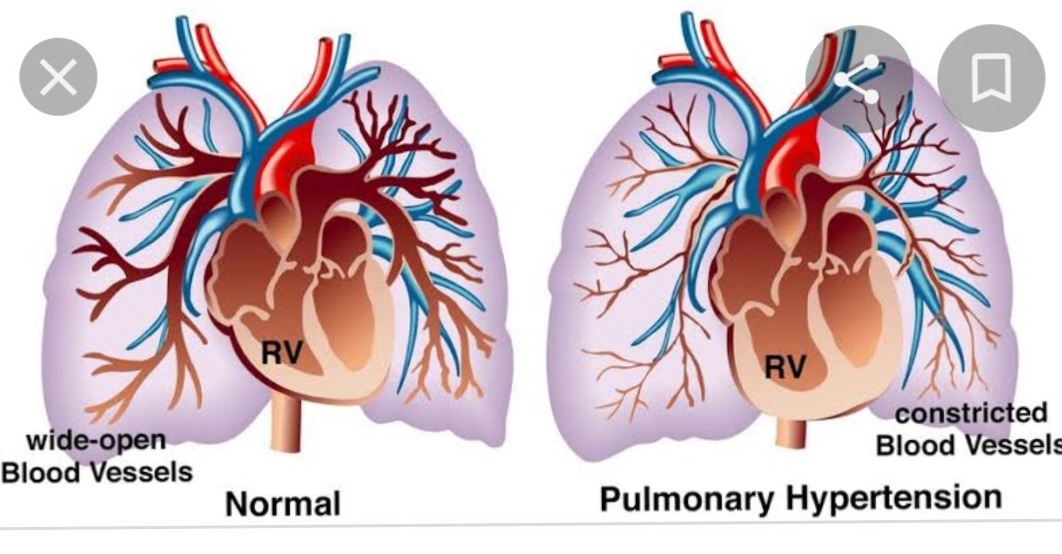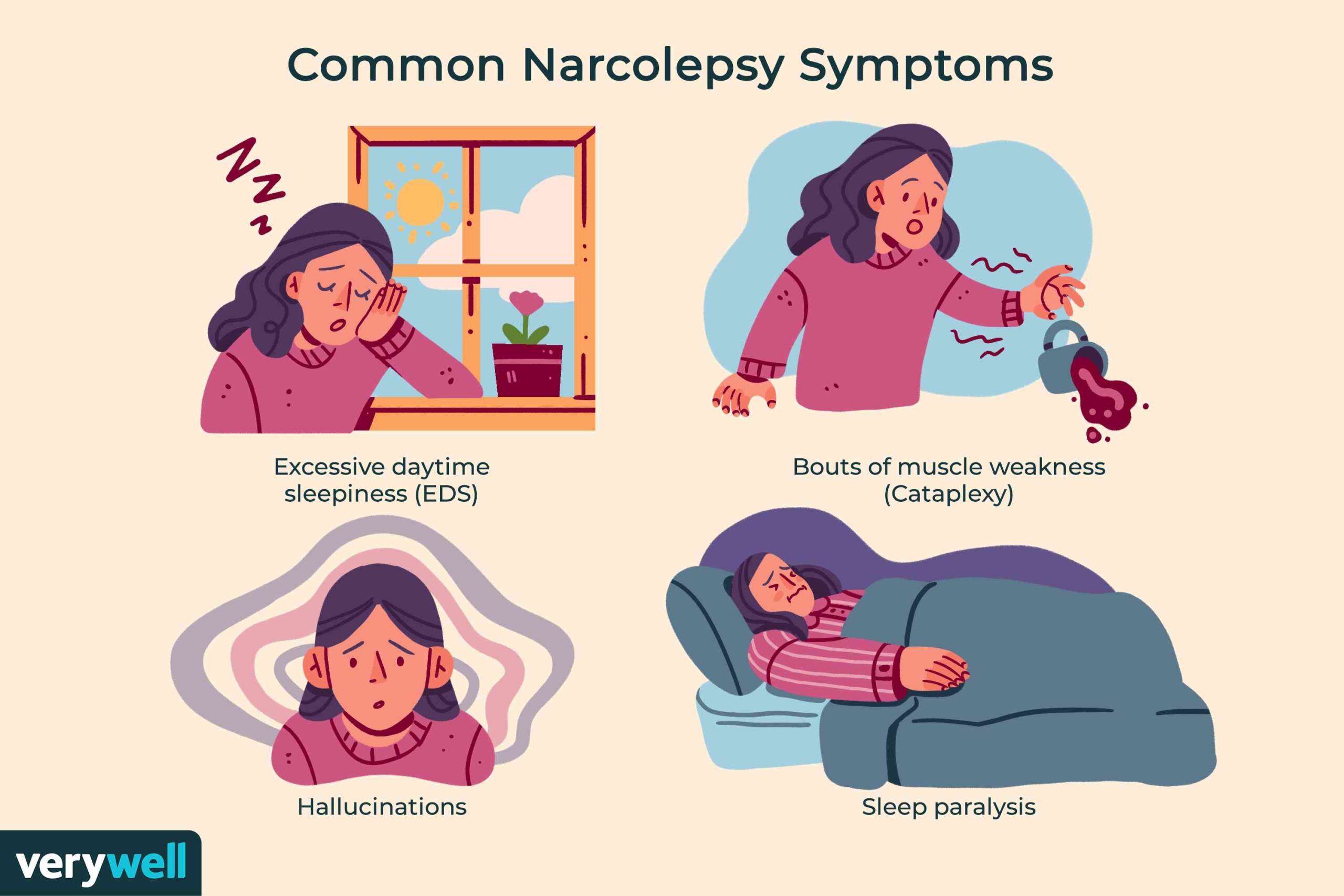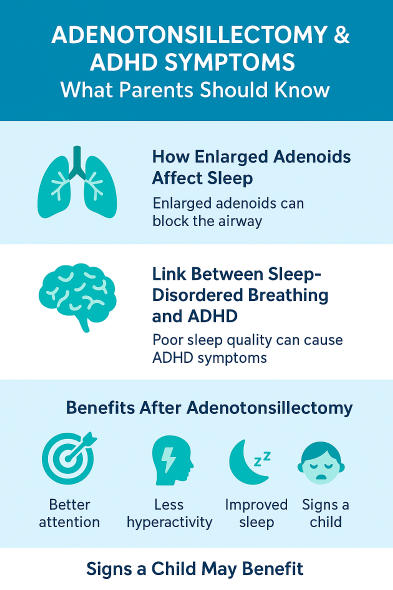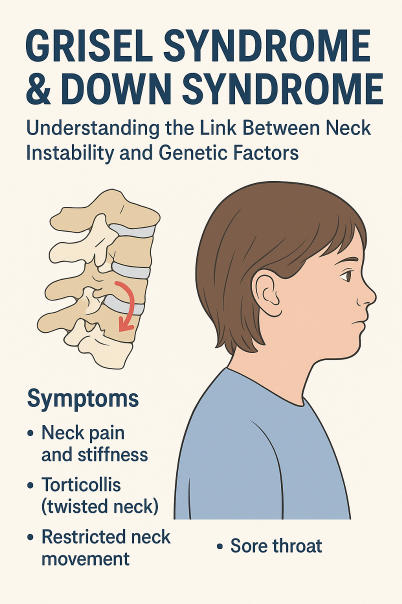What is the 30/30/30 rule for weight loss-various aspects-
The 30-30-30 guideline is a weight reduction strategy that includes:
Consuming 30 grams of protein within 30 minutes of waking.
Engaging in 30 minutes of low-intensity exercise afterward.
The 30-30-30 guideline may have been inspired by Tim Ferris’ book.
Some believe the 30-30-30 guideline can assist with weight loss by:
Establishing a calorie deficit.
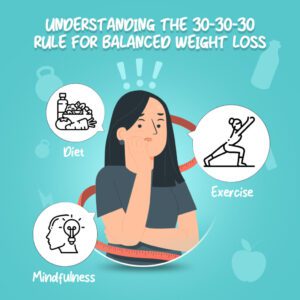

Consuming protein and exercising in the morning may support healthier decisions and create a calorie deficit.
Developing lean muscle.
The synergy of exercise and nutrition can assist in building lean muscle while reducing fat.
Encouraging a balanced method.
The 30-30-30 guideline considers both calorie intake and expenditure, potentially leading to a sustainable lifestyle.
Nevertheless, some specialists claim that the 30-30-30 guideline overlooks calories and that weight reduction primarily results from a calorie deficit. They also suggest that a more adaptable and individualized weight loss approach might be preferable.
That strategy is referred to as the 30-30-30 rule. It’s an uncomplicated yet memorable concept that motivates you to consume 30 grams of protein within 30 minutes after getting up and then engage in 30 minutes of low-intensity physical activity.
A weight loss technique referred to as the 30-30-30 method has become popular on Social Media. The regimen consists of consuming 30g of protein within the initial 30 minutes of your day, followed by engaging in 30 minutes of low-intensity exercise. Experts indicate that morning exercise and an increase in protein consumption might help achieve a calorie deficit and assist you in making healthier choices for the rest of the day. Nonetheless, the 30-30-30 method may not be suitable for everyone, and developing a more adaptable and individualized weight loss strategy could be preferable. Another new diet is gaining traction on social media platforms. The 30-30-30 strategy has become popular on Social Media , with many content creators asserting that this method has enabled them to lose weight in a sustainable manner.
Supporters argue that, in contrast to other fad diets that have attracted attention previously, the 30-30-30 method represents a lifestyle change rather than a fleeting trend.
The 30-30-30 diet consists of consuming 30g of protein shortly after waking, followed by 30 minutes of low-intensity exercise.
This strategy was first introduced in Tim Ferris’ book The 4-Hour Body in 2010 but has since been revitalized by nutritionist and wellness podcaster Gary Brecka.
So, is the 30-30-30 trend an effective means of losing weight or merely another passing fad?
How the 30-30-30 diet can assist with weight loss
Let’s begin with the advantages.
“The positive aspect of the 30-30-30 regimen is that it’s fairly reasonable when compared to some of its predecessors and, undoubtedly, the trends that will follow it,” states Sophie Medlin, consultant dietitian at City Dietitians. “Having a high-protein breakfast is advisable as it tends to be more filling than many of our usual breakfast choices. ”
In simpler terms, this means you will feel satisfied for a longer period.
Natalie Burrows, a nutritional therapist and the founder of Integral Wellness, concurs. She references a 2014 study published in the Federation of American Societies for Experimental Biology Journal, which discovered that individuals consuming 30g of protein at breakfast had reduced calorie intake at lunch.
Burrows asserts that stabilizing blood sugar levels during the first meal of the day—like you would by opting for a high-protein breakfast—is crucial to your dietary decisions for the remainder of the day.
Additionally, Burrows points out that protein has a thermogenic effect. This means you expend more energy digesting it compared to breaking down carbohydrates and fats.
The combination of these effects may result in a calorie deficit. This is positive news if your goal is weight loss.
What about exercise? Burrows mentions numerous benefits associated with performing 30 minutes of low-intensity exercise in the morning, with one being enhanced weight management.
Alongside boosting your daily calorie burn, which can aid in weight loss, Burrows notes that certain low-intensity exercises can enhance muscle mass and cardiovascular fitness.
For update on further important health related topics and frequently asked questions on health topics by general population please click on the link given below to join our Whatsapp group –
https://chat.whatsapp.com/Lv3NbcguOBS5ow6X9DpMMA
These factors collectively promote sustainable weight loss.
Shortcomings of the 30-30-30 diet plan
One possible limitation of the 30-30-30 method is that it may not align well with the hectic schedules of individuals.
“In my observation, the majority of individuals’ morning routines consist of school commutes, hurried activities, and generally just managing to leave the house punctually,” states Medlin. “This implies that for the overwhelming number of individuals, allocating 30 minutes in the morning for exercise, alongside additional time to prepare and plan a protein-rich breakfast, is not feasible. ”
Medlin mentions that when a habit transformation proves to be impractical, it typically indicates it’s a trend.
Another possible drawback of the 30-30-30 phenomenon? It lacks any specifics on how to eat or exercise throughout the remainder of the day.
Medlin notes it’s a reasonable method if you have sufficient time to devote to it during the mornings, but she highlights that if you follow the 30-30-30 protocol and then consume fast food for lunch and dinner while remaining inactive for much of the day, you will probably not see significant weight loss.
“As always, weight reduction revolves around energy equilibrium and establishing a deficit, which this program may not produce,” she remarks.
Moreover, we all have different preferences; not everyone can tolerate a protein-rich meal early in the morning.
Medlin points out that if you don’t regard yourself as a morning person and generally don’t feel any hunger until later in the day, this might not be the most suitable method for you.
Similarly, Burrows is not convinced about the 30-minute timeframe.
“Because of their sleep-wake pattern, most people are not in a position to consume food within 30 minutes, as melatonin, the sleep hormone, continues to be active in the initial 30-90 minutes after waking,” she clarifies.
She indicates that eating too early can lead to feelings of nausea.
Regarding exercise, it’s crucial to keep in mind that moving your body holds value and significance regardless of the time of day you choose to do it.
However, Medlin believes that discovering an exercise routine that complements your lifestyle is more essential than working out right after you get up.
Adjustments to the 30-30-30 diet that may work for you
Both experts suggest modifications to this strategy that could make it more attainable.
“I would recommend having your breakfast after your workout or splitting it so that you consume half before and half after, which can help you better manage your appetite during the morning, as exercise can amplify our hunger,” advises Medlin.
Likewise, Burrows suggests loosening the “eat within 30 minutes of waking” guideline. Instead, she recommends aiming to have breakfast within the first two hours of your day.
Food quality is important as well.
“Become familiar with fiber and fill your plate with vegetables to help you reach your 30g a day of fiber,” urges Burrows.
Takeaway
The 30-30-30 diet might be a more rational and sustainable strategy for weight loss compared to numerous other trends – but that doesn’t ensure it will be effective for everyone.
Ultimately, Burrows states, “There is proof indicating that the 30-30-30 approach will be effective, but what genuinely benefits an individual is a method that can be consistently achieved over an extended period. ”
What Is the 30/30/30 Method?
There are many weight loss techniques available, and most of them, regrettably, lack effectiveness. The innovative 30/30/30 method, nonetheless, is genuinely based on scientific principles and could be worth exploring if you aim to shed some pounds. The 30/30/30 method entails consuming 30 grams (g) of protein within the initial 30 minutes after waking up, followed by 30 minutes of physical activity.
This approach was initially introduced by Timothy Ferriss in his book “The 4-Hour Body,”1 but gained traction through biologist Gary Brecka on YouTube. 2 Brecka asserted that it can assist with weight loss and help you manage your blood sugar and insulin levels.
Here’s everything you should know about the 30/30/30 method, and if it suits your needs.
How Does 30/30/30 Work?
With the 30/30/30 method, you begin by consuming 30 g of protein within the first 30 minutes of waking up. Carbohydrates and fats can also be part of this, but the key aspect is ensuring that your breakfast contains approximately 30 g of protein.
The following step is to engage in 30 minutes of exercise. For the 30/30/30 method, it’s suggested that you perform steady-state cardiovascular exercise. This refers to low-intensity cardio activities that elevate your heart rate slightly but not excessively, such as walking or leisurely bike riding. The aim is to maintain your heart rate at or below 135 beats per minute (bpm). A helpful guideline is if you can maintain a conversation while jogging or biking, then your heart rate is likely at or below 135 bpm.
Eating protein at breakfast and participating in cardiovascular exercise are recognized for their various health advantages and their role in weight loss. “There is considerable scientific evidence that increasing your protein intake, particularly at breakfast, can aid in reducing calorie intake throughout the day since protein helps you feel satiated longer a registered dietitian, stated to Health. “Some research has also indicated that individuals consuming higher protein (but the same caloric intake) still lose weight more rapidly. ” Furthermore, “having a sufficiently protein-rich breakfast can help regulate blood sugar and mitigate insulin resistance, which contributes to persistent weight loss, a registered dietitian nutritionist and cardiology dietitian with Entirely Nourished, explained to Health.
Regarding steady-state cardiovascular exercise, it helps maintain flexibility, enhances your bone strength, aids in weight management, and offers numerous other benefits. 3 Additionally, there is evidence suggesting that steady-state cardio, in particular, may assist in fat burning, according to the Indian Council on Exercise (ACE).
How to Do the 30/30/30 Method
Here are the steps to effectively perform the 30/30/30 method.
Step One: Eat 30 Grams of Protein
Consume 30 g of protein within the first 30 minutes after waking up in the morning. To facilitate this, it may be wise to prepare your breakfast the night before. You can achieve your goal with meals such as:
- Three scrambled eggs, enhanced with cheese
- A fruit smoothie incorporating protein powder
- Greek yogurt embellished with nuts
- Cottage cheese paired with pineapple
- High-protein bread spread with nut butter or topped with eggs and cheese
- A bowl of quinoa garnished with tofu, eggs, beans, or cheese
Step Two: Engage in 30 Minutes of Exercise
Prepare your workout attire and decide which kind of exercise you’ll perform in the morning. The emphasis is on aerobic exercise, rather than strength training. You’ll want to exercise with enough intensity that you notice your heart rate increasing, but not so intensely that you can’t sustain a conversation if you wish to.
Here are a few suggestions that should elevate your heart rate into the desired zone:
- Take a walk either on a treadmill or in your neighborhood
- Enjoy a leisurely bike ride
- Play some music and dance
- Go for a jog
- Try a cardio machine at the gym, such as the stair stepper or elliptical
- Swim laps in a pool
- Potential Advantages of the 30/30/30 Strategy
The concept behind the 30/30/30 strategy is that it can promote fat loss while preserving lean muscle. According to ACE, any time you elevate your heart rate above its resting level, you’ll be enhancing or at least sustaining your fitness. And reaching that ideal heart rate zone is beneficial for fat burning.
Eating protein at breakfast may also assist with achieving that fat-burning objective. “By consuming 30 grams of protein within the first 30 minutes of waking up, individuals can kickstart their metabolism and provide their bodies with essential nutrients. A breakfast high in protein can help manage hunger and stabilize blood sugar levels. ”
Research supports this notion. A 2021 study demonstrated that a higher protein intake combined with cardiovascular exercise led to reduced body fat, lower cholesterol, decreased inflammation, and enhanced insulin sensitivity.
Potential Dangers and Considerations
While engaging in cardio exercise in the early morning has advantages, any exercise performed at any time of day is beneficial. ACE indicates that high-intensity workouts use carbohydrates before tapping into body fat, but your metabolism will remain elevated for a more extended period post-workout, which burns body fat later. This is referred to as the after-burn effect. Thus, regardless of how you opt to exercise, you will be burning body fat at some stage.
The level of your insulin may significantly influence your fat loss. Insulin serves as your body’s fat storage hormone. It enables your body’s cells to utilize sugar and other carbohydrates, either for energy or fat storage. When your carbohydrate consumption is elevated, your insulin levels will also rise, indicating your body is utilizing carbohydrates for energy instead of drawing from its own fat reserves. To promote fat burning, consider reducing your carbohydrate intake.
Another factor to keep in mind is that not everyone feels hungry immediately upon waking. You might not want to compel yourself to eat if you’re not feeling hungry. Fish advised consuming 20-30 grams of protein during each meal. “While I don’t believe it’s essential to eat right after waking, I do recommend intuitively eating within the first hour and don’t consider it harmful to aim for eating in the first 30 minutes.
Furthermore, some individuals may face digestive problems if they eat right before exercising. “If that’s true for you, transitioning to having the protein shake post-workout could be a better choice,” Routhenstein mentioned.
The 30 30 30 diet was originally created by Tim Ferriss in his book The 4-Hour Body, but it recently became more popular after nutritionist Gary Brecka highlighted it on Social Media .
The primary elements of the 30 30 30 diet consist of:
Ingest 30 grams of protein within 30 minutes of waking.
Engage in 30 minutes of low-intensity exercise afterward.
Consume healthy foods throughout the rest of the day.
There is no need to count calories or adhere to a very restrictive meal plan.
What does 30 grams of protein appear like?
Select protein-rich foods or protein supplements, such as high-protein shakes. The following breakfast options contain 30 grams of protein, even though the 30 30 30 diet does not explicitly state what to have for breakfast.
Sample Breakfast #1
3-4 eggs: 18-24 grams of protein
1/4 cup of shredded cheese: 6 grams of protein
1 slice of avocado toast: 3-4 grams of protein
Coffee or tea: 0 grams of protein
Sample Breakfast #2
1 scoop of protein powder: 23 grams of protein
1 1/2 cups of milk or plant milk: 2-12 grams of protein
1/2 cup of berries or other fruit: 1 gram of protein
2 teaspoons of nut butter: 2-3 grams of protein
Ice for blending
Sample Breakfast #3 (Vegan)
5 slices of uncured turkey bacon: 15 grams of protein
2 high-protein waffles or pancakes: 12 grams of protein
1/2 cup of fresh raspberries: 1 gram of protein
Coffee or tea: 0 grams of protein
Sample Breakfast #4
8 ounces of plain Greek yogurt: 23 grams of protein
1/2 cup of strawberry slices: 1 gram of protein
1 ounce of pistachios: 6 grams of protein
Coffee or tea: 0 grams of protein
Sample Breakfast #5
1/2 cup of cooked quinoa: 4 grams of protein
1/4 cup of black beans: 4 grams of protein
1/2 avocado: 2 grams of protein
3 eggs: 18 grams of protein
Sample Breakfast #6
1 cup of cottage cheese: 24 grams of protein
1/8 cup of pumpkin seeds: 5 grams of protein
1 medium banana: 1 gram of protein
Change your breakfast meal plan daily to prevent boredom or stick with your preferred 30-gram protein breakfast while following the 30 30 30 diet.
After breakfast, engage in 30 minutes of low-intensity cardiovascular exercise, such as:
- Walking
- Jogging
- Using an elliptical machine or stair climber
- Riding a bike
- Swimming laps
- Rollerblading
- Kickboxing
- Rowing
- Playing basketball
Select activities you enjoy and maintain consistency by exercising all or most days of the week.
Claims and Promises of the 30 30 30 Diet
The 30 30 30 diet claims that it may assist with weight management, boost energy, improve metabolism, and aid in fat management while preserving muscle. The 30 30 30 diet also claims that it may promote a healthy lifestyle and contribute to a balanced diet, which could enhance overall well-being.
This diet resembles a high-protein diet, yet it does not specify what to eat after breakfast or how to stay active beyond the initial 30 minutes of exercise. Other weight management diets provide more specific guidance. The 30 30 30 diet is a straightforward plan that is somewhat ambiguous, apart from the recommendations for the morning routine.
Scientific Evidence and Research
Although scientific studies investigating the effects of the 30 30 30 diet are insufficient, researchers show benefits associated with having a high-protein breakfast and completing at least 30 minutes of morning exercise each day.
Hey practitioners! Participate with Doctor an all-encompassing 6-week program focused on assessing functional medicine labs from two viewpoints: adult and pediatric. Throughout this program, you will investigate the intersection of lab findings related to various illnesses and age demographics, gaining insight into how human lab values differ along a continuum shaped by age, genetics, and time.
Evidence Supporting 30 Grams of Protein for Breakfast
Research shows the advantages linked to eating 30 grams of protein for breakfast are as follows:
One investigation discovered that consuming a minimum of 30 grams of protein at breakfast enhanced satiety and energy expenditure when compared to skipping breakfast.
Another investigation indicated that eating 30 grams of protein at each meal enhanced satiety, eating patterns, dietary selections, and adherence to weight management meal plans.
A third investigation implies that consuming 30 grams of protein for breakfast resulted in a 30% boost in muscle protein synthesis compared to consuming only 10 grams of protein. The researchers suggest ingesting high-protein meals three times a day to optimize muscle synthesis.
Research also illustrates the advantages of consuming 30-45 grams of protein at 1-2 meals each day, as this practice increases or helps preserve lean body mass and strength as one ages.
Researchers repeatedly demonstrate that protein intake enhances satiety and maximizes energy expenditure.
Nonetheless, some investigations reveal no variances in body weight when comparing breakfast consumers to those who forgo breakfast.
Consuming 30 grams of protein for breakfast may aid in promoting optimal health and weight management, but it is also vital to take in protein during lunch and dinner.
Evidence Supporting 30 Minutes of Exercise Daily
Researchers discovered distinct advantages linked to engaging in at least 30 minutes of aerobic exercise each day. For instance:
Studies indicate that exercising for 90 minutes weekly at a moderate intensity can increase life expectancy.
Another investigation proposes that working out for 30 minutes enhances mood and overall health.
A third investigation revealed that exercising for 30 minutes daily for 8 weeks improves health markers, such as cholesterol and cardiorespiratory fitness, although the 30 minutes could consist of a combination of three 10-minute sessions spread throughout the day.
However, researchers determined that completing 60 minutes of exercise daily is more suitable for individuals with a goal of weight management.
Thus, 30 minutes of daily exercise should be regarded as a baseline. Nevertheless, individuals who are overweight or obese may gain advantages from exercising for 60 minutes rather than combining two 30-minute workouts at different intervals during the day.
Evidence Supporting Morning Exercise
Morning exercise seems to be exceptionally effective for weight management and healthy weight maintenance.
One study found that consistent exercise timing, especially morning workouts, may improve weight management by fostering habits and enhancing self-control.
Another investigation indicated that morning exercise reduced abdominal fat and blood pressure.
A third investigation suggests that morning exercise is more effective than evening or afternoon exercise in facilitating weight management.
Consequently, while all exercise is beneficial, morning workouts are particularly advantageous for weight and abdominal fat control.
Nutritional Considerations and Guidelines
The 30 30 30 diet does not provide details regarding nutritional balance, but it does stipulate 30 grams of protein at breakfast and adopts minimum exercise guidelines.
Functional protein needs to facilitate protein synthesis and strength equate to 1-2 grams of protein per kilogram of body weight (0. 5-1 gram per pound of body weight) daily, but regularly consuming more than 2 grams per kilogram (1 gram per pound) may lead to vascular, renal, or digestive issues.
When designing specific meal plans for the 30 30 30 diet, it’s crucial to select a variety of foods from each food group to guarantee sufficient amounts of vital nutrients, vitamins, and minerals. Taking a multivitamin supplement enhances any nutritious meal plan.
Both the American College of Sports Medicine (ACSM) and the World Health Organization (WHO) advise healthy adults to engage in 30 minutes of moderate-intensity aerobic exercise five days a week or 20 minutes of vigorous aerobic exercise three days a week to optimize physical health. Nonetheless, these are the minimum recommendations.
The U. S. Department of Health and Human Services guidelines for physical activity suggest 150-300 minutes of moderate-intensity aerobic exercise weekly or 75-150 minutes of vigorous aerobic exercise weekly, along with strength-training exercises 2-3 times weekly to enhance health.
Potential Benefits of the 30 30 30 Diet
Adhering to the 30 30 30 diet provides numerous potential benefits, as evidenced by the studies referenced earlier. Following a 30 30 30 diet as part of a high-protein meal plan is an excellent method to foster muscle growth and maintenance, support metabolism, and increase satiety for better weight management.
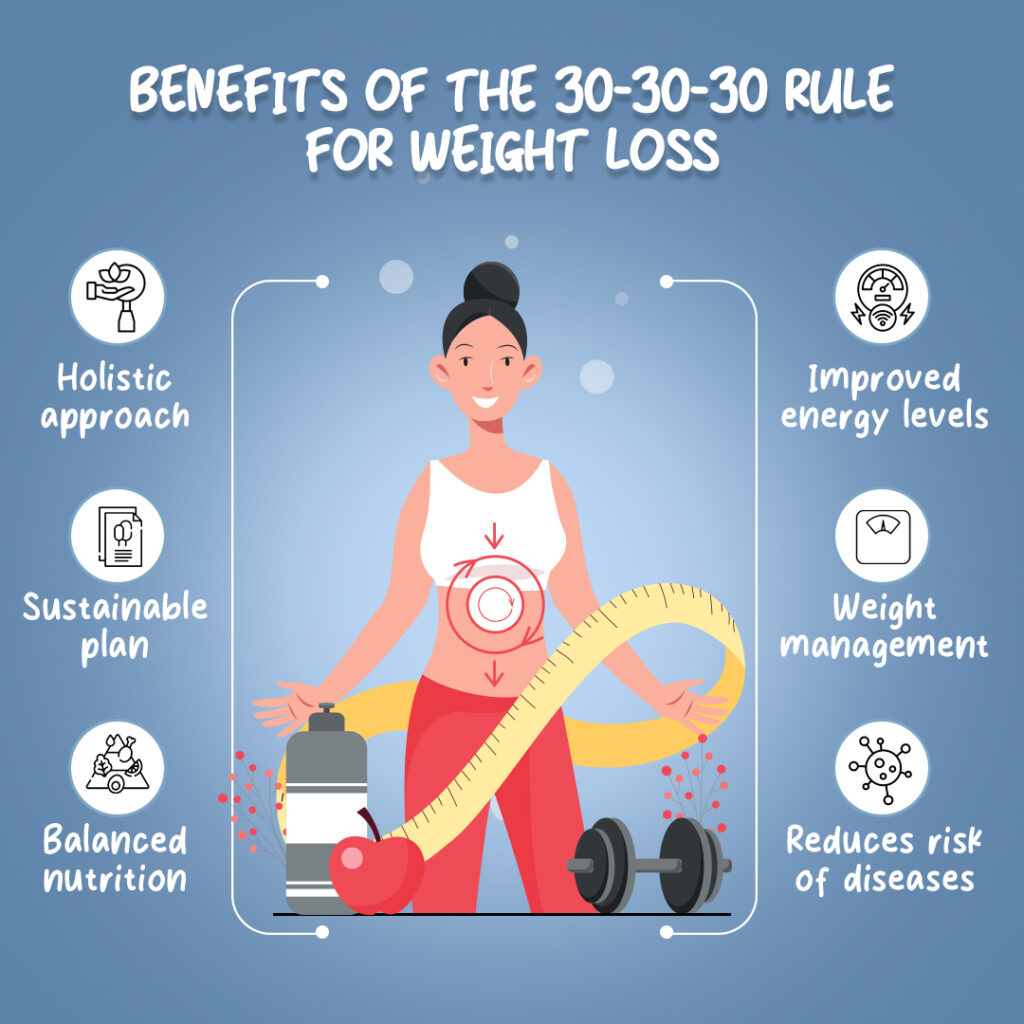

Higher protein diets are potential strategies for weight management and might lower the risk of obesity-related conditions, such as cardiovascular health and blood sugar control.
Additional studies indicated that high-protein diets could aid in weight management, reduce waist circumference, and help preserve healthy glucose, triglycerides, cholesterol, and insulin levels.
Research demonstrates that engaging in regular exercise for at least 30 minutes daily, five days a week or more, offers heart-supportive advantages.
Potential Risks and Drawbacks
Potential risks and drawbacks linked to the 30 30 30 diet include difficulties in sustaining the diet over the long term in some instances.
Individuals who engage in the 30 30 30 diet as part of a high-protein meal plan might face headaches, bad breath, constipation, or other side effects associated with high-protein diets. Nevertheless, incorporating carbohydrates with protein could help alleviate these issues.
The 30 30 30 diet approach has not been extensively studied, especially over the long term. The overall conclusion is that no single diet is perfect for every person, and the most effective weight management plans are tailored to an individual’s lifestyle, medical history, body weight, and health objectives.
The 30 30 30 diet involves low-intensity exercise after consuming 30 grams of protein. However, research indicates that while high-intensity interval training (HIIT) and moderate-intensity continuous training (MICT) both enhance body composition and cardiorespiratory fitness, HIIT provides additional benefits regarding waist circumference, fat management, time efficiency, and enjoyment.
Ultimately, researchers suggest that while achieving 20-30 minutes of exercise daily can enhance aerobic capacity, workouts lasting 40-60 minutes are more effective for attaining and sustaining an ideal body weight.
Individuals with specific medical conditions, such as heart issues or blood sugar concerns, should always consult their doctor or dietitian to determine which personalized diet plan is most suitable for them.
Practical Tips for Implementation
Keep several suggestions in mind when adopting the 30 30 30 diet to maximize the benefits of this meal strategy:
Consume 30 grams of protein at breakfast within 30 minutes of waking up.
Then proceed to engage in 30 minutes of low-intensity cardiovascular activity, like walking, biking, rowing, swimming, or using a stair climber or elliptical machine.
Opt for whole (non-processed) foods, incorporating a variety of plant-based items, as part of a heart-healthy dietary approach.
Steer clear of heavily processed meats (sausage, salami, hot dogs, etc. ), refined grains (like white bread), and other overly processed food products.
Implement portion control and practice mindful eating (eat when you are truly hungry and cease eating as soon as you begin to feel full).
Stay hydrated by drinking plenty of water throughout the day.
Achieve a balance between a nutritious diet, physical activity, adequate sleep, and effective stress management.
Although the 30 30 30 diet consists of just 30 minutes of exercise, numerous individuals (including those aiming for weight management) might gain from engaging in more than 30 minutes of workout each day.
Practitioner Insights
Many individuals may find it beneficial to regard the 30 30 30 diet as part of a well-rounded meal plan and fitness regimen. Healthcare practitioners ought to inform individuals about this diet and adaptations to the 30 30 30 plan based on a person’s health condition, medications, general well-being, and weight management objectives.
Healthcare providers can assist individuals in adopting healthy dietary shifts, such as engaging in regular physical activity (aerobic and strength-training exercises) and maintaining a good mix of protein, fruits, vegetables, nuts, seeds, legumes, whole grains, plant-based fats, and other nutrient-rich options.
What is the 30 30 30 rule for fat burning?
The guideline involves consuming 30 grams of protein within 30 minutes after waking up in the morning and subsequently engaging in 30 minutes of low-intensity exercise.
What to eat for breakfast for 30/30/30?
- 5 Tasty Breakfast Suggestions To Begin Your 30/30/30 Diet.
- Scrambled eggs combined with cheese.
- Protein powder smoothie.
- Yogurt combined with nuts.
- Cottage cheese served with pineapple.
- High-protein bread with eggs and cheese on top.
- Quinoa bowl featuring eggs, beans, or cheese.
What are the side effects of the 30/30/30 diet?
Individuals adhering to the 30/30/30 diet within a high-protein meal plan might encounter headaches, bad breath, constipation, or other adverse effects associated with high-protein diets. Nevertheless, the inclusion of carbohydrates alongside protein could assist in alleviating these side effects. The 30 30 30 diet approach has not been researched extensively, especially regarding its long-term impact.
What exercise burns the most belly fat?
Some excellent cardiovascular aerobic exercises for abdominal fat consist of:
- Walking, particularly at a brisk speed.
- Running.
- Biking.
- Rowing.
- Swimming.
- Cycling.
- Group fitness sessions.
What are the side effects of the Whole 30 diet?
The Whole30 diet may lead to fluctuations in your blood sugar levels. It may also result in gut inflammation and negatively impact your health. If you suffer from diabetes or irritable bowel syndrome, you may want to steer clear of the Whole30 diet.
Can you use protein powder for 30/30/30?
You ought to be capable of reaching your target with foods like: Three scrambled eggs, garnished with cheese. A fruit smoothie blended with protein powder.
For update on further important health related topics and frequently asked questions on health topics by general population please click on the link given below to join our WhatsApp group –
https://chat.whatsapp.com/Lv3NbcguOBS5ow6X9DpMMA
Issued in public interest by –
www.entspecialistinnashik.com
Mysimba side effects
The typical side effects associated with Mysimba (which may impact more than 1 in 10 individuals) include nausea and vomiting (the sensation and act of being ill) and constipation; dizziness and dry mouth were also frequent (observed in up to 1 patient in 10). For the complete list of all side effects documented with Mysimba, refer to the package leaflet.
Understanding Side Effects of Mysimba
Mysimba side effects often consist of feeling unwell (nausea), throwing up (vomiting), constipation, headache, and fatigue.
Duration of Mysimba Side Effects
Mysimba’s side effects vary from person to person. We will explore this in greater detail below.
Some individuals may experience side effects after their initial dose, while others might not encounter any until their Mysimba dosage is raised.
Not everyone who uses Mysimba will experience side effects.
Gaining an understanding of Mysimba’s half-life can offer further insight into this. Half-life is defined as the duration it takes for 50% of the medication to exit your system. The half-life of Mysimba varies for each active component:
- bupropion – 21 hours
- naltrexone – 5 hours
This indicates that Mysimba’s side effects should begin to decrease as the medication clears from your system.
If you persist with the treatment, you might experience side effects lasting from several days to a few weeks.
Mysimba Side Effects Duration for Different Groups
Several factors can affect the length of time Mysimba side effects last, including:
- pre-existing medical conditions
- other medications
- age
Failing to take Mysimba as prescribed or consuming too much can raise your likelihood of experiencing side effects.
If you take an excess amount of Mysimba beyond what has been prescribed, contact a doctor right away or visit AandE.
Long-term Side Effects of Mysimba
.Your physician or prescriber will keep track of your Mysimba side effects. You are allowed to discontinue its use at any moment, provided you consult with them beforehand.
Risks and Benefits of Long-term Use
Long-term benefits of Mysimba include:
- achieving weight loss objectives, which may lower the chances of long-term issues such as heart disease and increase life span
- reduced hunger
- enhanced self-worth and body image
Potential risks/long-term side effects of Mysimba include:
- lupus
- elevated blood pressure (hypertension)
- a small heightened risk of experiencing a seizure (1 in 1000)
- mental health issues, including anxiety or depression
The most effective way to minimize long-term side effects is to adhere to your prescriber’s guidelines while using Mysimba.
Managing Side Effects of Mysimba
You can handle Mysimba side effects as you typically would if you experienced these symptoms. For instance:
- nausea and vomiting can be addressed by consuming small amounts frequently and steering clear of large, fatty, spicy, or greasy meals
- headache can be alleviated with pain relief medication and rest
If you observe any of these side effects, it may indicate a more serious issue and necessitates prompt medical intervention:
- suicidal thoughts
- loss of consciousness
- red, itchy spots
- severe muscle cramps
- hallucinations
- a sudden shift in blood pressure
Further instructions on managing the side effects of Mysimba can be located in the related risk management plan.
Conclusion
Duration of Mysimba side effects varies from person to person. You might be more prone to experiencing Mysimba side effects if you exceed the recommended dosage, have specific health issues, or are taking certain medications. A healthcare provider will only prescribe Mysimba if they believe it to be a safe and appropriate weight loss solution for you.
If you suffer from Mysimba side effects for an extended period, reach out to your doctor. You can also consult one of our prescribers, gather more information about Mysimba, or read about our other weight loss options.
What is Mysimba?
Would you want to learn more about the weight loss medication Mysimba? You’ve arrived at the correct location. The majority of queries regarding the weight reduction drug ‘Mysimba’ are addressed in this piece.
What is Mysimba used for?
In addition to diet and exercise, the weight loss medication Mysimba is used in obese patients to promote weight loss. It is a prescription drug that can only be prescribed by a licensed practitioner.
What is the mechanism behind Mysimba?
The weight reduction medication Mysimba, which is only available with a prescription, contains naltrexone and bupropion as its two main components. Patients typically take one to two tablets of Mysimba each day, with a maximum of four tablets allowed. The active ingredients in the tablets are believed to suppress cravings, reduce the urge to eat, and make weight loss easier by lowering your appetite so that you’re content with eating less. People with an overweight BMI of 30 or more are treated with Mysimba.
What are the effects of Mysimba?
In order for a drug to be approved for sale, it must go through extensive and stringent testing. According to data made available to the public by The European Medicines Agency, Mysimba has been shown to be helpful in lowering body weight in around 4500 overweight or obese patients across four major clinical trials. In the studies, patients were given either the medication or a placebo in conjunction with a weight reduction plan that included counseling and guidance on food and physical activity.
The European Medicines Agency continues by stating:
“The average weight loss in patients treated with Mysimba was between 3.7 and 5.7% in three of the studies, as opposed to between 1.3 and 1.9% in those given placebo; between 28 and 42% of patients treated with Mysimba achieved 5% weight loss, compared with between 12 and 14% of patients treated with placebo. About 13 to 22% of those taking Mysimba achieved at least a 10% reduction in weight, while 5 to 6% of placebo-treated patients did so.
In the other trial, the overall weight reduction throughout the course of the research was greater, with 8.1% for Mysimba and 4.9% for placebo, and the patient counseling was also more intensive. In contrast to 34% and 17%, respectively, with placebo, 46% and 30% of patients receiving Mysimba experienced weight losses of 5 and 10%, respectively.
The degree of improvement with Mysimba when compared to placebo was comparable across different analytical methods, but the benefits were the least apparent when using the most conservative methods, which assumed that patients who did not finish the trial would not have experienced any improvement. The treatment effect was more pronounced in individuals who had finished 56 weeks of therapy or had lost at least 5% of their starting body weight in four months.
What is the duration of Mysimba?
A single pack of 112 pills lasts for five weeks at the beginning of your Mysimba regimen.
You should use your medication as we have instructed you. Over a four-week period, you will progressively raise your dose of Mysimba until you get to what is known as the maintenance dose. The dosage of Mysimba that you will continue to use is this.
You increase your dose as follows:


Once you’re past the 4-week dose-escalation period and have achieved the maintenance dose, a single pack of 112 tablets lasts 4 weeks.
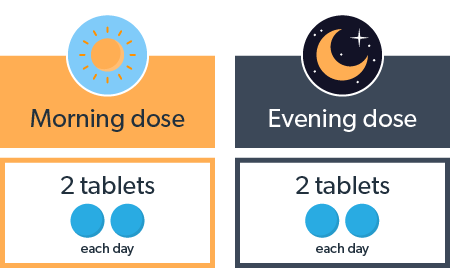

How long does it take for Mysimba to start working?
According to the advice provided by the pharmaceutical firm that manufactures Mysimba, improvements in well-being may be seen by the eighth week of therapy. Over 4,500 overweight or obese individuals have participated in clinical trials of Mysimba. The weight effects of Mysimba in conjunction with a lower calorie diet and physical activity were shown to be considerable in these studies.1 If you have lost 5% or more of your body weight by week 16 of therapy, Mysimba is deemed to be effective.
After 16 weeks on Mysimba, if you haven’t shed 5% of your body weight, the course may be considered ineffective, and your prescription may be stopped. Even if this seems discouraging, it’s crucial to keep in mind that here at PrivateDoc, we can assist you with alternative strategies if Mysimba isn’t effective for you. We offer more than simply a prescription service.
What is the price of Mysimba?
A starter kit for Mysimba, which includes 112 extended-release tablets and five weeks of therapy, costs £119. The cost is only £1.06 per tablet.
Can I get Mysimba through the National Health Service?
Mysimba is not licensed by the NHS for weight reduction therapy, even though it has been demonstrated to be a successful weight loss medication that was approved for usage in Europe in 2015. However, Mysimba is still offered by private prescription for weight loss treatment.

